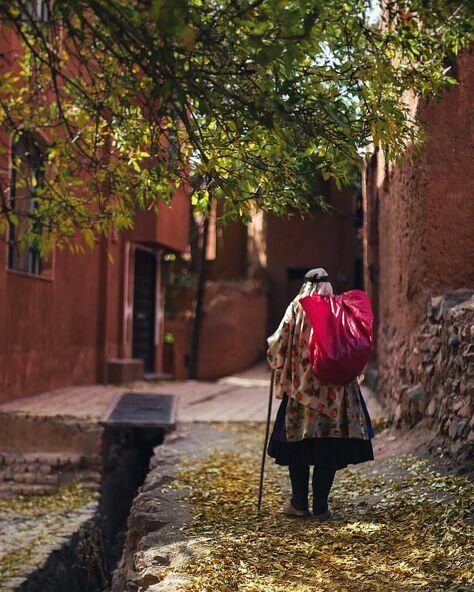Abyaneh: Stunning red adobe village

TEHRAN – Picturesquely situated at the foot of Mt Karkas (3899m), the ancient village of Abyaneh is one of top tourism destinations in central Iran. It features crumbling red mud-brick houses with lattice windows and fragile wooden balconies, twisting lanes and hospitable people that still dress in the traditional outfits.
Abyaneh is testament to both the age and semi-isolation from other parts of the country as the elderly residents speak Middle Persian, an earlier incarnation of Farsi that largely disappeared some centuries ago.
Located some 40 kilometers from Natanz, Isfahan province, Abyaneh is like a living architectural and anthropological museum. It presents an impressive model of the man adaptation to the environment.
Given the evidence found in Abyaneh, the village dates back to great antiquity, but its golden age was during the Safavid era. The word ‘Abyaneh’ has been derived from the word ‘viona’ meaning ‘Willow Grove’ (in the local dialect ‘vey’ means willow), Mehr reported on Saturday.
The village extends along a river. Although the village itself is situated on high grounds, in the past three castles were built to protect the people from enemy attacks. Furthermore, the configuration of Abyaneh protects it from strong wind and flood.
Abyaneh has a compact texture with narrow and steep alleys. Located on the slopes of the mountain, the houses are arranged in a stair-step shape, so that the roofs of some houses are the yards of others. Timbers, straw and clay have been used for building the roofs. The walls, built from red mud bricks are impressive. The mud bricks harden when they are exposed to rain. The houses have been built facing the east to get the maximum sunshine.
An impressive aspect of Abyaneh’s architecture is that the houses are uniform in appearance. The doors, most of which have two knockers, are wooden and built in traditional styles. There are beautiful patterns, poems and the names of the owners and mason carved on some doors. The poems demonstrate a good picture of the old Iranian culture. Many facades date back to the Safavid era. Beside the doors of many houses, there are small platforms providing places for passers-by or local residents to rest for a while.
The simplicity of Abyaneh houses presents a picture of the life in rural Iran. Each room is used for various purposes. For example, a single room may be used as a dining-room, a sitting-room, a bedroom and a guest-room. To make efficient use of fuel, the rooms used in winter are architecturally different from those used in summer. To provide equal lighting for all parts of the rooms, there are several small opening in the roofs. The size of the rooms, windows and doors all indicate the simplicity of life in this old village.
AFM/MQ/MG
Leave a Comment